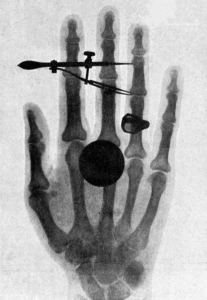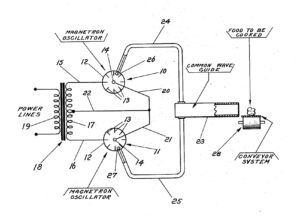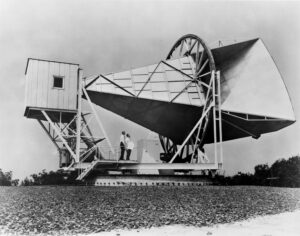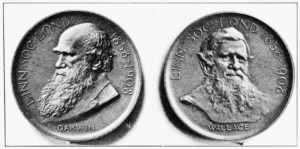Stories of scientific discovery abound with lucky coincidences. It’s true that serendipity and good fortune are often cited as key factors in making scientific innovations. But look closer. Even when scientists feel that they just got lucky — like Newton being hit on the head with his proverbial apple — the steps leading to a new finding or idea often tell a different story. It takes more than being in the right place, at the right time, to make a serendipitous discovery. Here are a few important attributes of scientists who turned a lucky break into a breakthrough:

- Background knowledge
It’s not a myth that scientists spend a lot of time studying. It takes a well-prepared mind to recognize a breakthrough. Many “serendipitous” discoveries take place only because the discoverer happened to have specialized background knowledge. For example, a second population of living coelacanths (a rare type of fish that closely resembles fossils from 400 Million years ago) was discovered in 1997 when a chance sighting happened to be made by a student of marine biology. The graduate student, Mark Erdmann, was wandering through an Indonesian fish market with his wife, Arnaz Mehta Erdmann, on their honeymoon, when she pointed out a strange-looking fish. He immediately recognized it as a coelacanth — and as a potentially important scientific discovery. Erdmann did “get lucky” but he was certainly helped along by his wife’s discerning eye and his training in marine biology.

- An inquisitive mind
Surprising or anomalous results sometimes stimulate new discoveries, but it takes a scientific perspective to look beyond an anomaly and see it as something worth following up. Wilhelm Roentgen’s 1895 discovery of the X-ray started with a serendipitous observation, but explaining it required careful study. Working by himself in the lab, Roentgen was trying to make electrons pass through air, when he noticed that with a high charge, his vacuum tube caused a screen all the way across his lab to light up. He wasn’t the first to see these strange effects — at least two other researchers had noticed them earlier, but they had not investigated them further. Roentgen, however, thought that these effects were worth studying. He carefully documented many different aspects of the new rays, and then published his work to encourage ongoing research. Roentgen’s initial observation was certainly serendipitous, but it was his subsequent investigation of the anomaly that turned it into a groundbreaking discovery.
- Creative thinking
Sometimes, serendipity doesn’t come from being the first to see something, but from being the first to see it in a new way. While working for the Raytheon company, Percy Spencer noticed that microwaves from the radar set he was working on had melted the candy bar in his pocket. He wasn’t the first person to notice that microwaves generate heat, but he was the first person to think of using this heat to cook food. He received a patent for his idea in 1950, and Raytheon developed the idea for commercial and industrial use. In a sign of things to come, popcorn was the first thing Spencer and his colleagues cooked with microwaves — it appears in the illustration from his patent!1 Spencer’s creative thinking turned a routine observation into a technological breakthrough.


- The right tools
New technologies often allow us to study things in ways that weren’t possible in the past. The first researchers to take advantage of a new technology often get “lucky” in making exciting new discoveries. One such discovery took place in the 1960s when a sensitive antenna, developed to communicate with satellites, became available for research use. Arno Penzias and Robert Wilson decided to use the antenna as a radio telescope to study low levels of radio waves in outer space. They knew that many celestial bodies — from stars to galaxies — emit radiation that corresponds to their temperatures, but decided to try and see whether any waves emanated from places where there were no stars. Penzias and Wilson didn’t expect to find much, but to their surprise, the telescope picked up radio waves in large amounts! These waves corresponded to temperatures indicating that space was about four degrees higher than previously thought. Theoretical physicists later recognized this as leftover warmth from the Big Bang itself — a discovery that can certainly be attributed to Penzias and Wilson, but also to the new technology they had at their disposal.
-

Both sides of the Darwin-Wallace medal awarded to Alfred Russel Wallace at the 1908 meeting of the Linnean Society of London. The award came on the 50th anniversary of the joint presentation that Darwin and Wallace made to the Royal Society. Photo credit: Wikimedia. Good timing
Important discoveries are often made simultaneously by different people, suggesting that the field is ripe for a new idea. Perhaps the pieces of a new theory are available in different scientific publications, just waiting for someone to put them together. Or perhaps new observations seem to independently point toward a unifying principle. The theory of evolution by natural selection may have been one of these ideas. Although Charles Darwin’s notes on evolution extend back to the late 1830s, Alfred Russell Wallace developed some of the same key ideas independently. Both drew on relatively recent advances in geology and economics, applying ideas from other fields to develop a new theory of their own. In the end, they agreed to share credit for the idea and jointly presented papers on evolution to London’s Royal Society. Darwin and Wallace were certainly great thinkers of their own accord, but good timing may have contributed to their conceptual breakthrough as well.
Take a sidetrip
Geology? Economics? What do these topics have to do with evolution? To find out more, read about the development of the theory of evolution on the Understanding Evolution website.
And what about that famous apple? Contrary to popular belief, it didn’t hit Isaac Newton — now famous for his theory of gravity — on the head. However, there is some evidence that falling apples inspired him to think about the forces that attract everything — from fruit, to our feet, to the moon — toward Earth. At least three different people who knew Newton recorded stories about falling apples in their memoirs. According to these accounts, Newton remembered that sitting in his mother’s garden watching apples fall off the trees got him started thinking about gravity. He didn’t publish his theory until years after his musings in the garden, though, and we know from all the notes and papers Newton left behind that plenty of plain old elbow grease went into his discoveries — even if he did get lucky with the apple.
Want more stories of serendipitous science? Visit NOVA’s series on Accidental Discoveries.
1US Patent # 2,495,429; Brown, D.E. 2001. Inventing in Modern America: From the microwave to the mouse. MIT Press.
